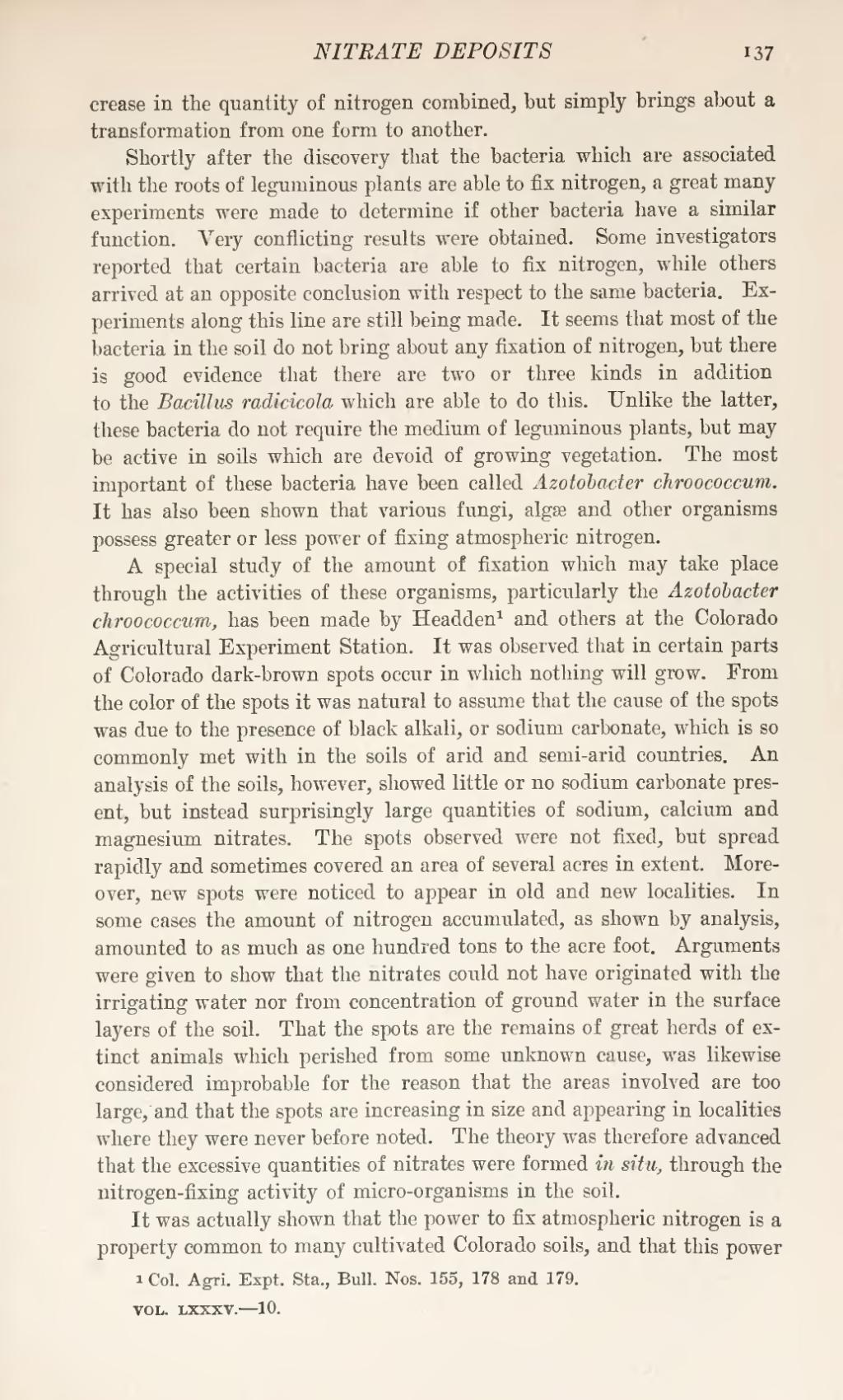crease in the quantity of nitrogen combined, but simply brings about a transformation from one form to another.
Shortly after the discovery that the bacteria which are associated with the roots of leguminous plants are able to fix nitrogen, a great many experiments were made to determine if other bacteria have a similar function. Very conflicting results were obtained. Some investigators reported that certain bacteria are able to fix nitrogen, while others arrived at an opposite conclusion with respect to the same bacteria. Experiments along this line are still being made. It seems that most of the bacteria in the soil do not bring about any fixation of nitrogen, but there is good evidence that there are two or three kinds in addition to the Bacillus radicicola which are able to do this. Unlike the latter, these bacteria do not require the medium of leguminous plants, but may be active in soils which are devoid of growing vegetation. The most important of these bacteria have been called Azotobacter chroococcum. It has also been shown that various fungi, algaæ and other organisms possess greater or less power of fixing atmospheric nitrogen.
A special study of the amount of fixation which may take place through the activities of these organisms, particularly the Azotobacter chroococcum, has been made by Headden[1] and others at the Colorado Agricultural Experiment Station. It was observed that in certain parts of Colorado dark-brown spots occur in which nothing will grow. From the color of the spots it was natural to assume that the cause of the spots was due to the presence of black alkali, or sodium carbonate, which is so commonly met with in the soils of arid and semi-arid countries. An analysis of the soils, however, showed little or no sodium carbonate present, but instead surprisingly large quantities of sodium, calcium and magnesium nitrates. The spots observed were not fixed, but spread rapidly and sometimes covered an area of several acres in extent. Moreover, new spots were noticed to appear in old and new localities. In some cases the amount of nitrogen accumulated, as shown by analysis, amounted to as much as one hundred tons to the acre foot. Arguments were given to show that the nitrates could not have originated with the irrigating water nor from concentration of ground water in the surface layers of the soil. That the spots are the remains of great herds of extinct animals which perished from some unknown cause, was likewise considered improbable for the reason that the areas involved are too large, and that the spots are increasing in size and appearing in localities where they were never before noted. The theory was therefore advanced that the excessive quantities of nitrates were formed in situ, through the nitrogen-fixing activity of micro-organisms in the soil.
It was actually shown that the power to fix atmospheric nitrogen is a property common to many cultivated Colorado soils, and that this power
- ↑ Col. Agri. Expt. Sta., Bull. Nos. 155, 178 and 179.
